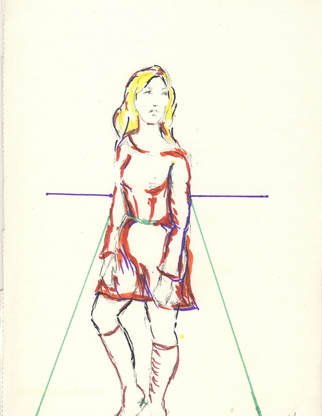 Several people have asked me to explain what I mean by “essential line drawing” as used on this website and in various postings that I have made on social media. Essential line drawing is a term that I use to describe a type of drawing that I have been doing for many years now. I doubt that it is in any art dictionary but it is a handy way of describing this type of drawing. Distilled to its essence, essential line drawing seeks to produce an image with the minimum number of lines that are needed to convey the concept that the artist is trying to express. For example, in a portrait, the image would be the minimum number of lines needed to convey the essence of the sitter. In a scene, it could be to the lines needed to express the emotions of the moment. This is not meant to be an academic exercise. The objectives are simplicity and clarity. You are putting aside what is non-essential in order to allow that is essential to show through more clearly. There are examples of essential line drawing in the works of many famous artists. Papblo Picasso and Henri Matisse did essential line drawings. More recently, you can find examples in the works of Peter Max. Each of these artists had their own approach but the basic concept is the same. The end result often sits on the border between realism and abstraction. You can tell what the image is but it is far from being a photographic image. From a techncal perspective, the biggest difficulty often is doing too much. If you put in too many lines, it becomes a standard line drawing. More importantly, they obscure the concept. Again, the objectives are simplicity and clarity. This is not to say that the essential line approach is the only way to produce art. It is simply one approach that I use. There are examples of essential line portraits and essential line figure drawings on Beyondships Art. Comments are closed.
|
AuthorRich Wagner is a writer, photographer and artist. Archives
November 2018
Categories
All
|
 RSS Feed
RSS Feed